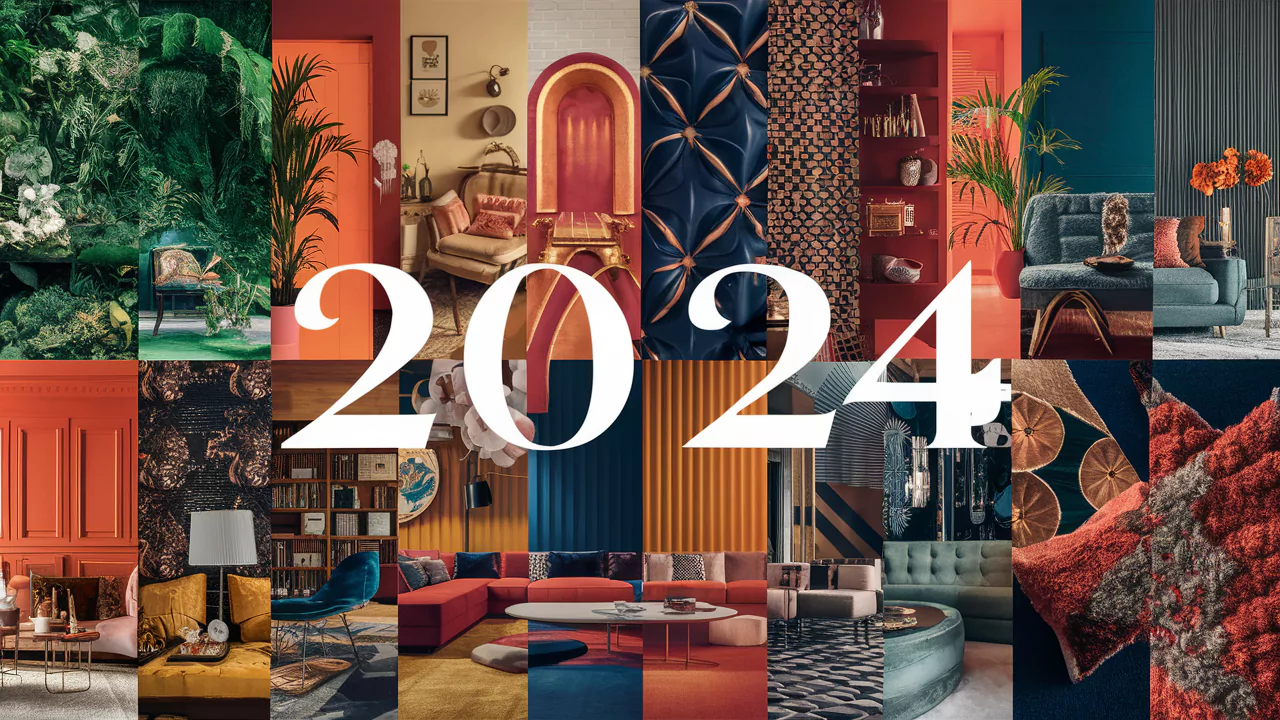As of 2024, several interior design trends are shaping the aesthetic and functional choices in residential and commercial spaces:
- Biophilic Design: There’s a growing emphasis on incorporating natural elements into interior spaces to improve well-being. This includes integrating plants, natural materials like wood and stone, and maximizing natural light and views.
- Sustainable and Eco-friendly Materials: With increased awareness of environmental issues, there’s a trend towards using sustainable materials such as recycled wood, bamboo, cork, and eco-friendly paints and finishes.
- Flexible and Multifunctional Spaces: As homes and workspaces blend, there’s a demand for adaptable interiors that can serve multiple purposes. This trend includes movable partitions, convertible furniture, and smart storage solutions.
- Bold Colors and Patterns: Vibrant colors and bold patterns are making a comeback, adding personality and drama to interiors. This trend includes rich jewel tones, graphic prints, and geometric patterns.
- Minimalism with Warmth: Minimalist design remains popular, but with a warmer and more inviting twist. Spaces are characterized by clean lines, uncluttered surfaces, and a focus on quality craftsmanship and tactile textures.
- Smart Home Integration: As technology advances, there’s an increasing integration of smart home features into interior design. This includes voice-activated systems, smart appliances, and automated lighting and climate control.
- Wellness-oriented Design: There’s a growing trend towards designing spaces that promote mental and physical well-being. This includes incorporating features like meditation corners, wellness rooms, and ergonomic furniture.
- Vintage and Retro Elements: Nostalgia plays a role in design trends, with vintage and retro elements making a comeback. This includes mid-century modern furniture, vintage-inspired decor pieces, and retro color schemes.
- Mixing of Textures: Layering different textures adds depth and interest to interiors. This trend includes combining materials like velvet, leather, metal, and natural fibers to create tactile contrasts.
- Personalization and Individuality: Designing spaces that reflect personal style and preferences is becoming more important. Customized furniture, bespoke artwork, and unique decor items are key to achieving a personalized interior.
These trends indicate a dynamic and diverse landscape in interior design, where aesthetics, functionality, and sustainability are increasingly intertwined. Designers and homeowners alike are exploring new ways to create spaces that are not only beautiful but also enriching and sustainable for the future.

